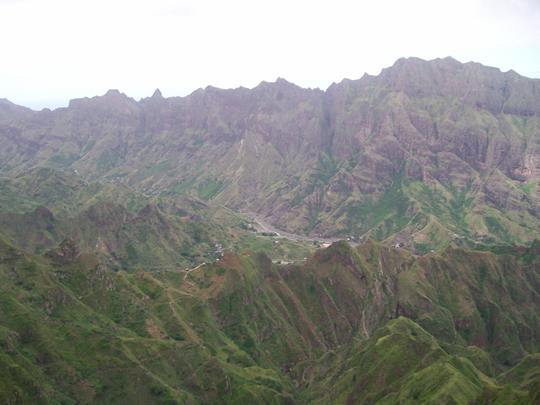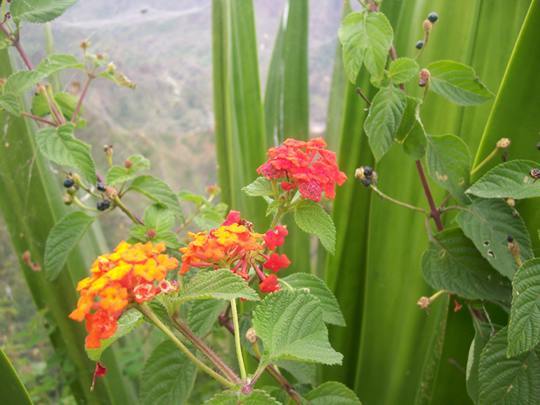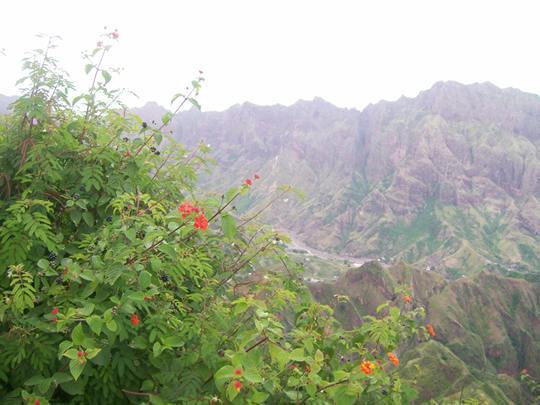Cape Verdes 16 53N 25 00W

|
The Cape Verdes have changed dramatically since we were here 28
years ago. Now one of the most successful African nations, it has embraced
democracy peacefully and the standard of living is one of the best in the whole
of Africa. There is still much poverty but nothing like that in the past when we
saw food aid in evidence everywhere. I will not forget the sight of people in
the street breaking up coconut shells for firewood.
Today the streets of Mindelo are busy with traffic and there are shops filled with all kinds of goods from the basics to motorbikes and computers. Even the hardware shop had a computerised stock management system although you still had to pay with a handwritten docket at another window. There is clearly a big contrast between those who have benefited from development and those who are still living a hand to mouth existence. Some of the local youth were well equipped with IPods and mobile phones but equally we saw young men driving donkeys carrying their daily water supply in jerry cans. We suspect there is also tension between the old ways and the expectations of the young. There seems to be little in the way of exports and apparently the country relies heavily on money sent home from relatives abroad. There are far more Cape Verdeans by descent abroad than in the islands themselves. Tourism is still in its infancy but there is enormous potential, not least because the weather is wonderful all year round . As I write this in the middle of November I sit in my shorts and T shirt at 9 o'clock at night. I imagine it gets a bit too hot in summer but there is an almost constant breeze blowing that keeps it cool. Mindelo is now like cities all over the world. It has some very attractive old buildings from colonial times which they could make more of. The streets are mostly cobbled and there are plenty of open spaces.With a bit more TLC (and money) it could be really lovely. They are trying so hard, it must be extremely difficult to prioritise any particular area of development when there is so much to do and so little to do it with. It is a very dusty place, partly due to the lack of rain but also due to a lack of maintenance.
Intrepid explorers ...and their guide
The countryside is very little affected by the “metropolis”. We spent a fascinating day in Sao Antao which remains very much a subsistence economy. Most of the people live by farming the wet western slopes, which like Madeira have been extensively terraced, but unlike much of Madeira are all still in productive use except for the highest and most inaccessible areas. The locals subsist on a variety of staple crops including yams, cassava, sweet potato, ordinary potato, bananas, manioc and maize. There are also a variety of beans and squashes, tomatoes cabbages etc.. They keep cows and goats and make a mild goat cheese that doesn't taste of goat at all. Fish is cheap and plentiful, from small mackerel type fish to chunks of tuna the size of a sheep. Clearly their diet must be pretty good if the seasons are kind to them. The biggest problem they have had in recent months was some torrential rain storms in the spring that destroyed terraces and washed away roads.
Our excellent guide for the day, Carlos, was clearly very proud of his country and did a good job in showing us some dramatic scenery and answering all our questions. He was also very helpful to the locals,giving a lift to a lad on his way to school and helping an old lady with her bag of potatoes on a long slog uphill. At 68 she looked worn out after having dug the potatoes. She complained that although she had 7 sons they were not interested in the agrarian life and she had to do the work. Lorraine gave her a hug. We had lunch at the home of a local
farmer with an array of local foods, including manioc, sweet potatoes and
cassava served with mackerel and some fishy soup/gravy. We sat outside in a fine
drizzle but it was still warm enough.
 The road we travelled after lunch was one of the most hair-raising I have ever travelled. It traversed an almost vertical 2000ft cliff before following a narrow ridge with an almost sheer drop either side. The photos we took do not really do justice to the scenery.
The route of the road lies close to the top of this cliff!
 Intensively farmed
terraces
Intensively farmed
terraces
Scenery of Sao Antao
|
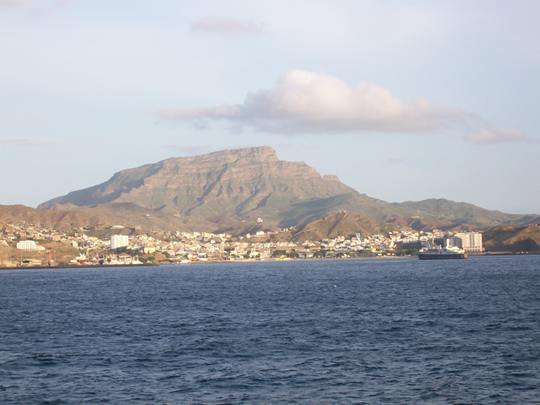



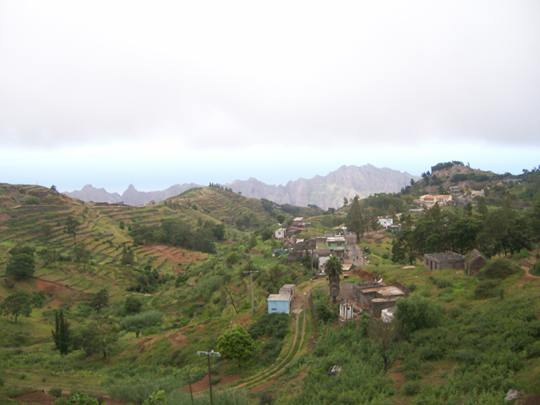 Hill top village
Hill top village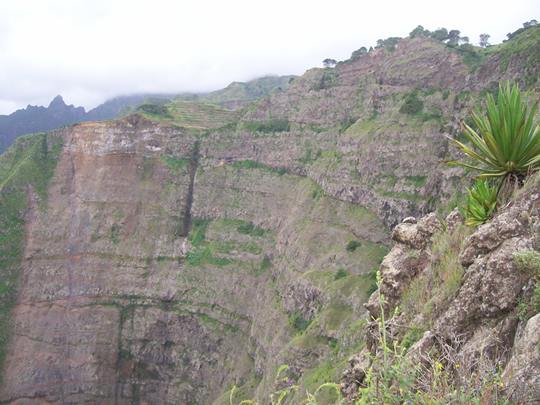
 Volcanic Terrain
Volcanic Terrain Top of the Volcano
Top of the Volcano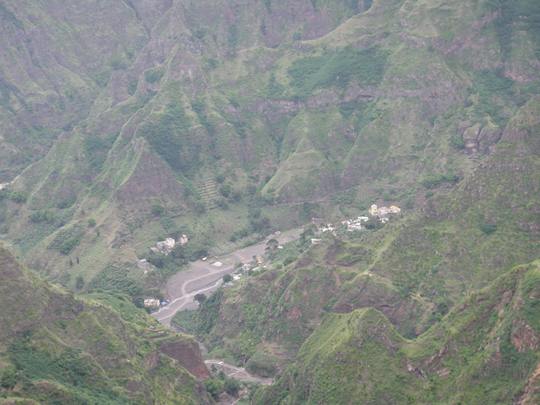 The village in a volcano 2000 feet
below
The village in a volcano 2000 feet
below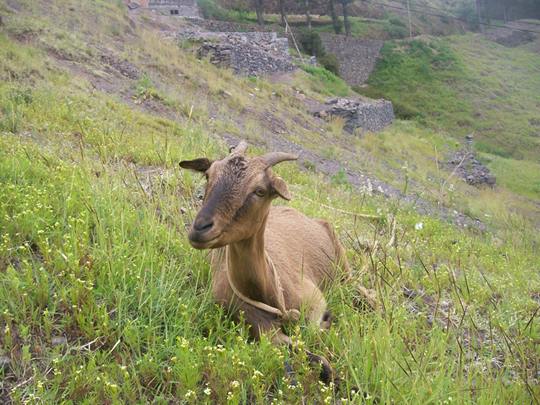 Happy goat
Happy goat Mountain Farm
Mountain Farm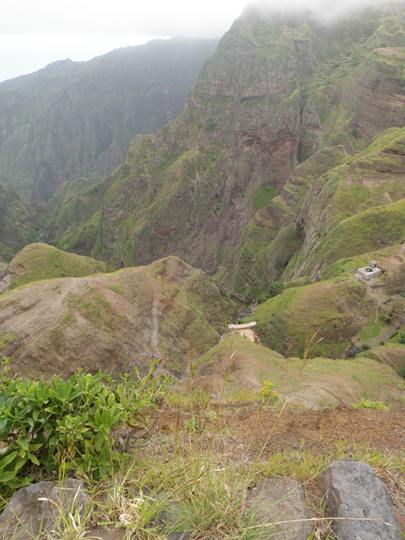 The route down to terraces
The route down to terraces
